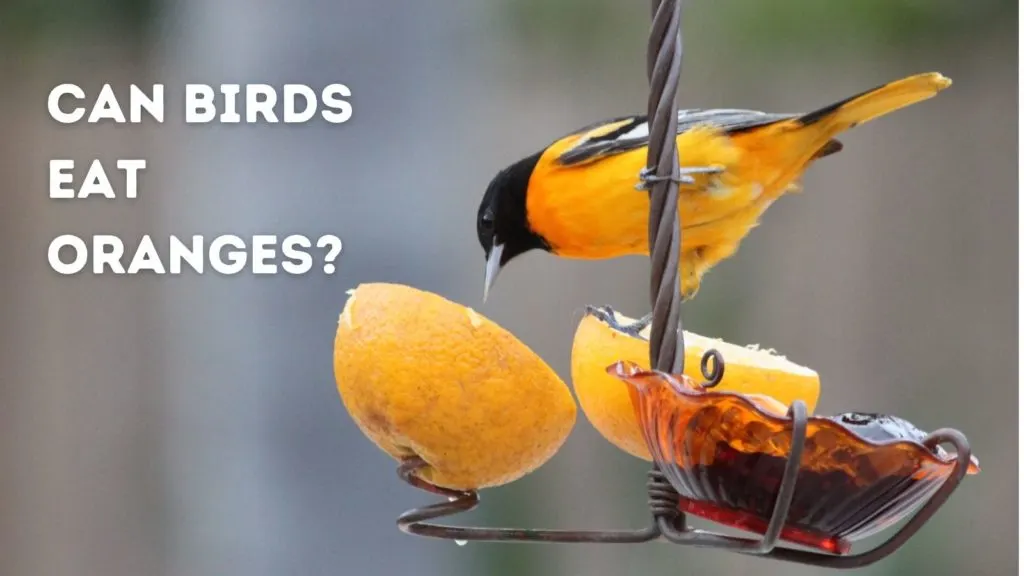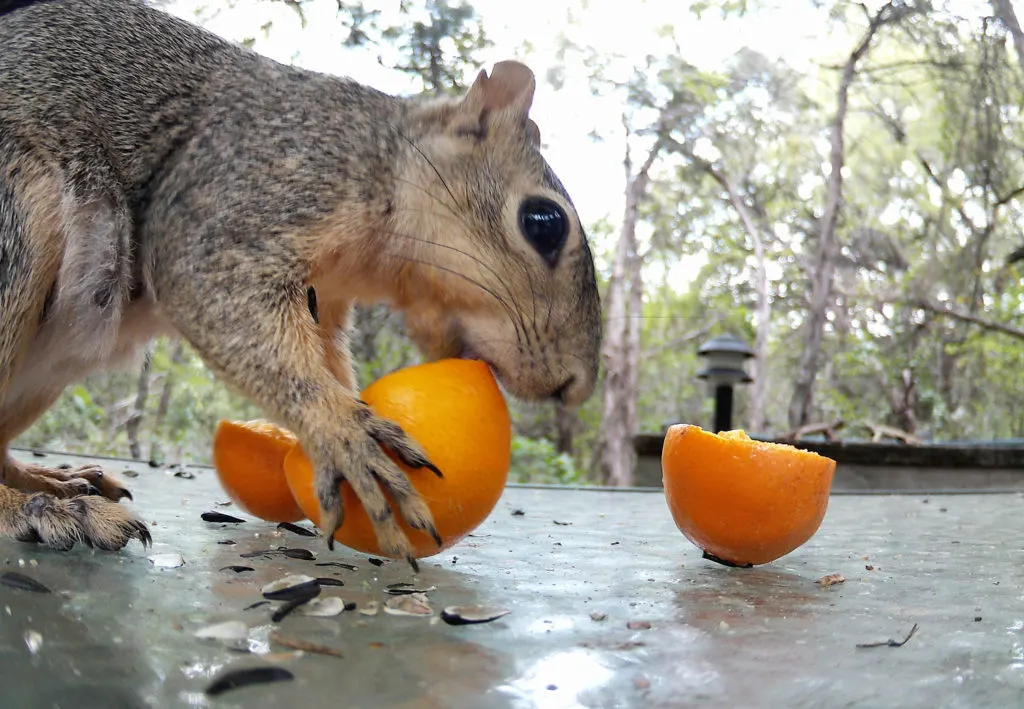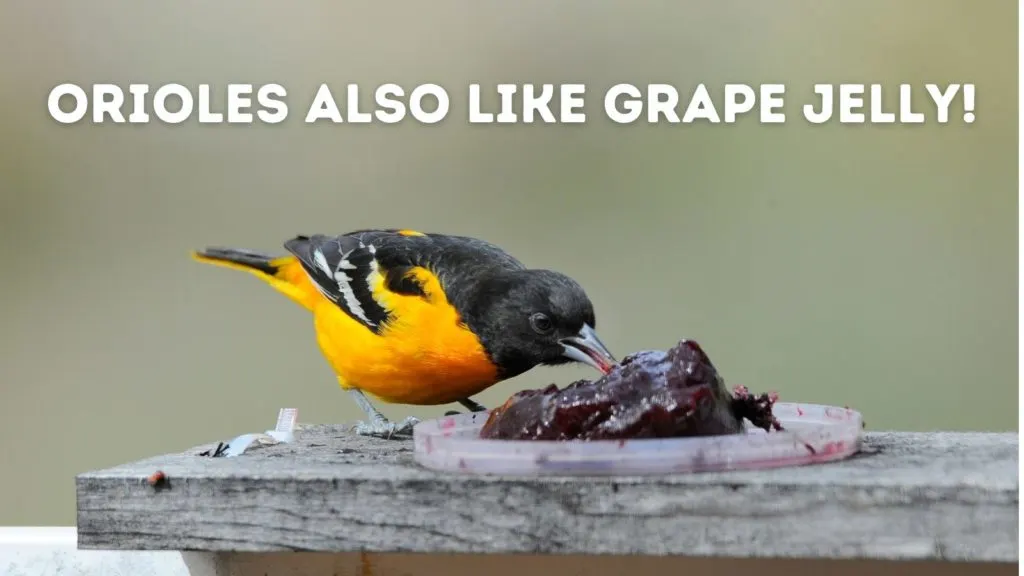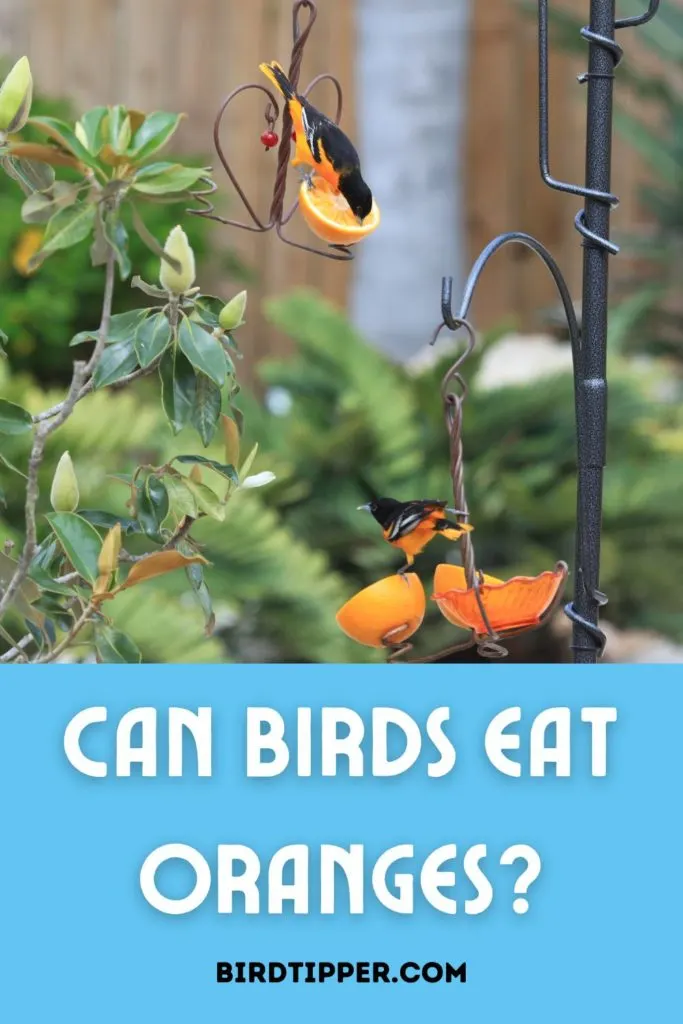If you’ve been feeding birds in your backyard for a while, chances are you’ve considered adding fruit to your bird feeder. Fruit’s a natural part of many birds’ diets (if you have a fruit tree on your property, you already know that!) If you’re wondering if birds can eat oranges, the answer is definitely yes–but not ALL birds will happily accept oranges.

Can birds eat oranges?
The short answer is yes!
Oranges are a great source of Vitamin C for birds and can help them stay healthy during the winter months when bugs and other insects are scarce.
Which birds will eat oranges?
So although birds CAN eat oranges, not all birds WILL eat oranges.
Orioles are one of the biggest fans of oranges–and even among orioles it may take some time before the birds begin dining on the fruit.
Other birds that might enjoy eating oranges include:
- Tanagers
- Mockingbirds
- Robins
- Woodpeckers
- Grosbeaks
What kind of oranges can I serve birds?
You can serve any type of oranges to birds–navel oranges, mandarin oranges, tangerines and more.
Birds (and butterflies) will enjoy fruit that is getting a little past its prime–but don’t serve fruit with obvious signs of mold.
Birds will only eat the fruit itself; they don’t eat the orange peel. You’ll want to discard the peel when the birds have eaten the fruit.
How should I serve oranges at the bird feeder?
You’ll want to cut the oranges before serving them to birds at the feeder. You can cut them in half or quarters–or slice them, if you like. We cut oranges in half and serve them like that.
You can purchase specially-made fruit feeders which have a nail sticking up in the feeder; you then skewer the orange half on the nail.
You don’t need a special fruit feeder to enjoy feeding oranges, however. Put them in a tray feeder or just on the ground.
Our squirrels have developed a taste for oranges:

If the squirrels are taking the oranges before the birds have a chance to enjoy them, you can instead serve the oranges in an empty suet feeder. Place the orange halves in the suet feeder and hang it for the birds to enjoy.
Similarly, mockingbirds may drive away other birds from the fruit tray. You might want to put out two fruit trays–one for mockingbirds and one for other diners. You can place the mockingbird rations on the other side of the yard or around at the side of your house so he only has a view of one feeder.
Along with oranges, you can place other fruit such as raisins or apple slices in your fruit feeding station.
And if your oranges are attracting orioles, you can also see if they’d like a bit of grape jelly! Orioles are big fans of grape jelly especially during the winter months. Any kind of jelly that does not contain artificial sweeteners can be used.

Cleaning a fruit feeder
We all know how sticky our hands are after eating an orange–and the same will hold true for your fruit feeder!
Only put out enough orange slices for a day or two (they’ll go bad quickly, especially in warm weather). They’ll also be a draw for ants, wasps and bees so don’t put out too many at a time.
During the summer, we hose off the feeding area after serving oranges to keep the ant population down.
If you have a dedicated fruit feeder, you’ll want to wash it off but also periodically give it a good scrubbing just as you do with any feeder. We dip our feeders in a solution of 1 part bleach to 9 parts water then rinse thoroughly to kill bacteria.
Oranges can add some real variety to your bird feeding station–and may even invite in some other bird species you don’t usually see!
Pin it to remember Can Birds Eat Oranges?

- Can Hummingbirds Predict Hurricanes? - May 11, 2024
- Can Grackles Be Dangerous to Your Dog? - October 13, 2022
- How to Make Eggshell Calcium for Birds - September 25, 2022
